Chemistry and Energy
0 likes238 views
This short presentation was created by the website www.gyanbikash.com to provide information for students in classes nine and ten. It welcomed the viewers to the site and thanked them at the end, signing off by saying goodbye.
1 of 28

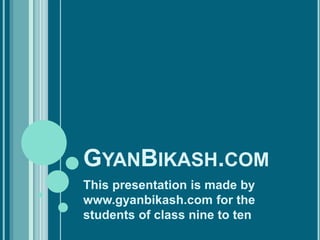

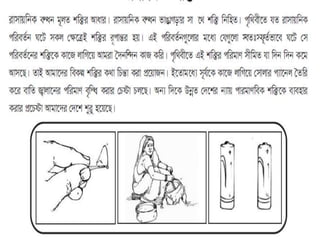
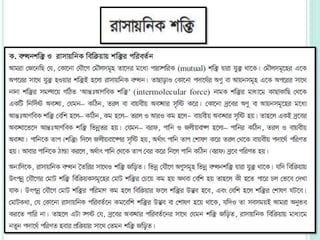
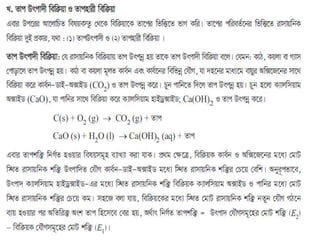
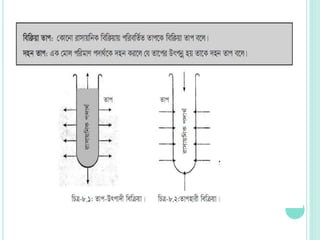
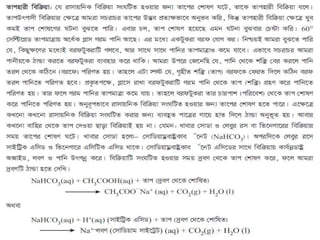
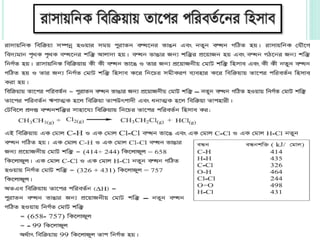




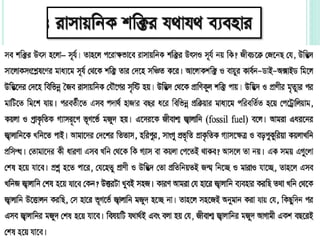

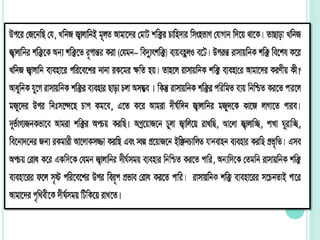
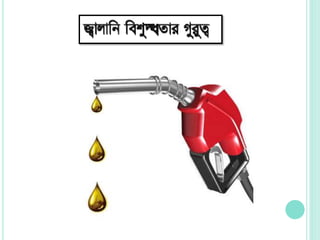
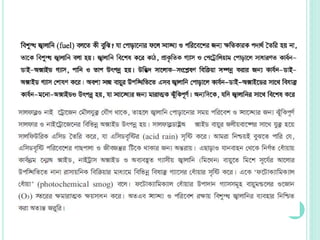
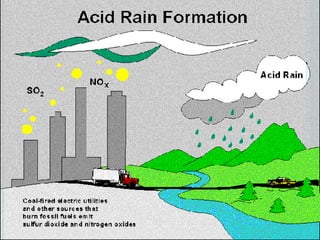

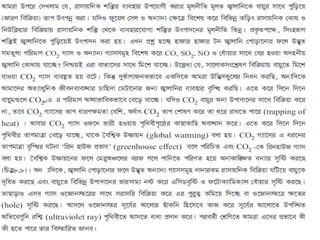
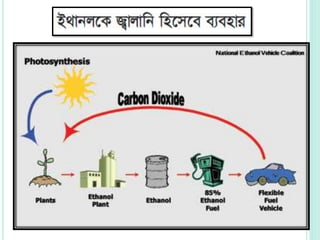
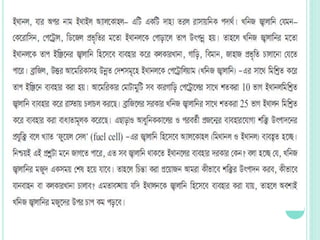
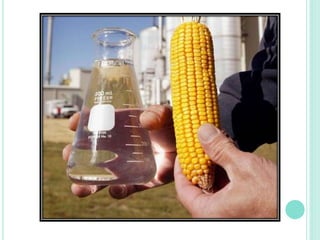




Ad
Recommended
Percentage Bonding
Percentage BondingGyanbikash
╠²
This 3 sentence summary provides the key information from the document:
The document welcomes viewers to the website gyanbikash.com and states that the presentation is made for students in classes nine to ten. It then says "That's all for today" and thanks the viewers while saying goodbye.Oxidation reduction
Oxidation reductionGyanbikash
╠²
This presentation introduces addition reactions to students in classes nine to ten. It begins with a welcome message and information about the presenting organization, www.gyanbikash.com. It concludes with a thank you and goodbye message after covering the topic of addition reactions.Equality of acid and base
Equality of acid and baseGyanbikash
╠²
This short presentation introduces the website gyanbikash.com and is intended for students in classes nine to ten. It discusses litmus paper and then concludes by thanking the viewers and saying goodbye.Chemistry in daily life
Chemistry in daily lifeGyanbikash
╠²
This presentation introduces common household items like baking powder, yeast, laundry soap, and detergent. It was created by www.gyanbikash.com for students in classes nine and ten. The presentation covers these everyday products and then concludes by thanking the viewers.Concept of ph
Concept of phGyanbikash
╠²
This presentation introduces students to pH meters and how they are used to measure acidity and alkalinity. It was created by the website www.gyanbikash.com for students in classes nine and ten. The presentation covers pH meters and then concludes after thanking the students for their time.(Fichero de sesiones expresi├│n corporal y danza)Alberto Bl
╠²
Este documento resume una sesi├│n de expresi├│n corporal y danza. Contiene informaci├│n sobre la fecha, lugar, n├║mero de alumnos y material utilizado. Describe varios ejercicios realizados para practicar la expresi├│n corporal a trav├®s del movimiento, la interpretaci├│n de personajes y roles, y la interacci├│n en grupo. Al final, incluye una reflexi├│n sobre los objetivos y progresi├│n de la sesi├│n.State Of Element
State Of ElementGyanbikash
╠²
This presentation introduces several scientific concepts for students including the states of matter of salt, water, and carbon dioxide as solid, liquid, and gas respectively. It demonstrates the physical changes of ice melting into water and water evaporating into vapor. Experiments are described such as a balloon test to observe molecules and the difference between diffusion and effusion. Other topics covered include candle burning and the cooling curve of water. The presentation concludes with thanking the students.Speacial chemical reaction
Speacial chemical reactionGyanbikash
╠²
This short presentation was created by the website www.gyanbikash.com to provide information for students in classes nine and ten. It welcomed the viewers to the site and thanked them at the end of the brief presentation. The presentation aimed to help students in classes nine and ten.Periodic Table
Periodic TableGyanbikash
╠²
This document provides an introduction to the French chemist Antoine Lavoisier who lived from 1743 to 1794. It mentions that he created a table of elements in 1789 when only 33 elements were known. The document concludes by thanking the viewer and saying goodbye.Mineral treasure-Fossil
Mineral treasure-FossilGyanbikash
╠²
This presentation introduces students to concepts like gasoline, bitumen, and alkane uses. It was created by www.gyanbikash.com for class 9-10 students to learn about these chemical topics. The presentation covers gasoline, bitumen, uses of alkanes, and concludes with thanks and goodbye.Finding the place of atom on periodic table from electron distribution
Finding the place of atom on periodic table from electron distributionGyanbikash
╠²
This presentation introduces electron distribution in atoms, focusing on periods 2 and 3 of the periodic table. It discusses how electrons are arranged in shells and provides information about halogens. The presentation concludes by thanking the audience and saying goodbye.Different useful things and washing soap
Different useful things and washing soapGyanbikash
╠²
This presentation introduces various chemical concepts and terms for students including ammonia producing plants, quick lime, spreading Uriah, potassium sorbet, and sodium sorbet. The presentation comes from the website www.gyanbikash.com and is intended for students in classes nine to ten.Changing condenced ore on oxide
Changing condenced ore on oxideGyanbikash
╠²
This presentation introduces students to various metals and materials including acidic flux, steel, stainless steel, and gold bars. It was created by www.gyanbikash.com for students in classes nine to ten. The presentation covers multiple topics but provides little detail on each.Structure of element
Structure of elementGyanbikash
╠²
This presentation introduces students to various chemical elements like boron, nitrogen, and magnesium. It also mentions taking a technetium injection. The presentation concludes by thanking the students and saying goodbye.Nuclear model
Nuclear modelGyanbikash
╠²
This presentation introduces students to scientists Earnest Rutherford and Neil Bohr and Bohr's model of the atom. It begins with welcoming the students and introducing the presenting organization. It then provides brief information about Rutherford and Bohr's contributions to understanding atomic structure, specifically Bohr's model of the atom. It concludes by thanking the students and saying goodbye.Mineral treasures ( metal nonmetal)
Mineral treasures ( metal nonmetal)Gyanbikash
╠²
This presentation introduces various minerals and compounds found in the earth's crust, including salt, diamond, bauxite, magnetite, and FeWO4. It is intended for students in classes nine and ten to teach them about important geological resources. The presentation concludes by thanking the viewers and saying goodbye.Idea of mole and chemical counting
Idea of mole and chemical countingGyanbikash
╠²
This presentation from www.gyanbikash.com provides math examples for fractions for students in classes nine to ten, showing 3/12 equals 0.25 and 8/6 equals 1.33. It concludes with a message thanking the viewers and saying goodbye.Idea of chemistry
Idea of chemistryGyanbikash
╠²
This presentation introduces chemistry and its applications in daily life. It shows symbols related to alchemy and chemistry, such as the symbol of the alchemist. It also depicts ways chemistry is used, including in making soap and detergent, using insecticides in farming, with aerosol sprays, and pasteurization. The presentation concludes with thanking the audience.Electrochemical cell
Electrochemical cellGyanbikash
╠²
This short presentation was created by the website www.gyanbikash.com to provide information for students in classes nine and ten. It welcomed the viewers to the site and thanked them at the end of the presentation for their time.Covalent bonding
Covalent bondingGyanbikash
╠²
This presentation introduces students to various chemical compounds including methane, ammonia, carbon dioxide, and sodium chloride. It was created by the website www.gyanbikash.com to educate students in classes nine and ten. The presentation covers these essential compounds and then concludes by thanking the viewers.Chemical reaction
Chemical reactionGyanbikash
╠²
This short presentation was created by the website www.gyanbikash.com to provide information for students in classes nine and ten. It welcomed the viewers to the site and thanked them at the end, signing off with "Goodbye".Chemical Bonding
Chemical BondingGyanbikash
╠²
This presentation introduces various types of ionic bonding found in different compounds for students in classes nine to ten. It discusses the ionic bonding of magnesium oxide, calcium chloride, and potassium chloride as examples. The presentation concludes by thanking the students and saying goodbye.Base and basic
Base and basicGyanbikash
╠²
This short presentation was created by the website www.gyanbikash.com to provide information for students in classes nine and ten. It welcomed the viewers to the site and thanked them at the end of the brief presentation. The presentation aimed to help students in classes nine and ten.Alkene and alkyne
Alkene and alkyneGyanbikash
╠²
This document provides examples of synthetic polymers including PVC pipe made from polyvinylchloride, nylon thread, plastic spoons, and derlin. It is intended for students in classes nine to ten and lists examples of tartaric acid before concluding and thanking the audience.Introduction to chemistry
Introduction to chemistryGyanbikash
╠²
This presentation introduces chemistry and its applications to students in classes nine to ten. It shows symbols related to alchemy and displays images of an alchemist, soap and detergents, a farmer using insecticides, aerosol sprays, and pasteurization to demonstrate how chemistry is used in daily life. The presentation concludes by thanking the viewers.An Air Trip
An Air TripGyanbikash
╠²
This document summarizes Mita's trip from Bangladesh to Thailand. It describes Mita filling out departure forms and going through immigration at the airport in Dhaka. It then discusses the flight from Dhaka to Bangkok, including details about safety procedures on the plane. Finally, it provides information about arriving at Suvarnabhumi Airport in Bangkok, describing the airport's size and facilities.Taijul Islam
Taijul IslamGyanbikash
╠²
Taijul Islam is a Bangladeshi cricketer who plays as a left-arm spinner. He made his debut for Bangladesh in 2014 against West Indies, taking 5 wickets. In his first Test against Zimbabwe later that year, he took 8 wickets in an innings, becoming the first Bangladeshi to do so. He was named man of the match for his performances. Taijul has since established himself as a key member of Bangladesh's national team across formats.Soumya Sarkar
Soumya SarkarGyanbikash
╠²
Soumya Sarkar is a 21-year-old all-rounder for the Bangladesh national cricket team who bats left-handed and bowls right-arm medium pace. He has played for Bangladesh at the under-19 and under-23 levels and made his ODI debut in 2014 against Zimbabwe. Soumya led his domestic team Prime Bank to a title win by scoring 97 runs and taking two wickets in the final. He has unexpectedly been selected for Bangladesh's squad for the 2015 ICC Cricket World Cup.More Related Content
More from Gyanbikash (20)
Periodic Table
Periodic TableGyanbikash
╠²
This document provides an introduction to the French chemist Antoine Lavoisier who lived from 1743 to 1794. It mentions that he created a table of elements in 1789 when only 33 elements were known. The document concludes by thanking the viewer and saying goodbye.Mineral treasure-Fossil
Mineral treasure-FossilGyanbikash
╠²
This presentation introduces students to concepts like gasoline, bitumen, and alkane uses. It was created by www.gyanbikash.com for class 9-10 students to learn about these chemical topics. The presentation covers gasoline, bitumen, uses of alkanes, and concludes with thanks and goodbye.Finding the place of atom on periodic table from electron distribution
Finding the place of atom on periodic table from electron distributionGyanbikash
╠²
This presentation introduces electron distribution in atoms, focusing on periods 2 and 3 of the periodic table. It discusses how electrons are arranged in shells and provides information about halogens. The presentation concludes by thanking the audience and saying goodbye.Different useful things and washing soap
Different useful things and washing soapGyanbikash
╠²
This presentation introduces various chemical concepts and terms for students including ammonia producing plants, quick lime, spreading Uriah, potassium sorbet, and sodium sorbet. The presentation comes from the website www.gyanbikash.com and is intended for students in classes nine to ten.Changing condenced ore on oxide
Changing condenced ore on oxideGyanbikash
╠²
This presentation introduces students to various metals and materials including acidic flux, steel, stainless steel, and gold bars. It was created by www.gyanbikash.com for students in classes nine to ten. The presentation covers multiple topics but provides little detail on each.Structure of element
Structure of elementGyanbikash
╠²
This presentation introduces students to various chemical elements like boron, nitrogen, and magnesium. It also mentions taking a technetium injection. The presentation concludes by thanking the students and saying goodbye.Nuclear model
Nuclear modelGyanbikash
╠²
This presentation introduces students to scientists Earnest Rutherford and Neil Bohr and Bohr's model of the atom. It begins with welcoming the students and introducing the presenting organization. It then provides brief information about Rutherford and Bohr's contributions to understanding atomic structure, specifically Bohr's model of the atom. It concludes by thanking the students and saying goodbye.Mineral treasures ( metal nonmetal)
Mineral treasures ( metal nonmetal)Gyanbikash
╠²
This presentation introduces various minerals and compounds found in the earth's crust, including salt, diamond, bauxite, magnetite, and FeWO4. It is intended for students in classes nine and ten to teach them about important geological resources. The presentation concludes by thanking the viewers and saying goodbye.Idea of mole and chemical counting
Idea of mole and chemical countingGyanbikash
╠²
This presentation from www.gyanbikash.com provides math examples for fractions for students in classes nine to ten, showing 3/12 equals 0.25 and 8/6 equals 1.33. It concludes with a message thanking the viewers and saying goodbye.Idea of chemistry
Idea of chemistryGyanbikash
╠²
This presentation introduces chemistry and its applications in daily life. It shows symbols related to alchemy and chemistry, such as the symbol of the alchemist. It also depicts ways chemistry is used, including in making soap and detergent, using insecticides in farming, with aerosol sprays, and pasteurization. The presentation concludes with thanking the audience.Electrochemical cell
Electrochemical cellGyanbikash
╠²
This short presentation was created by the website www.gyanbikash.com to provide information for students in classes nine and ten. It welcomed the viewers to the site and thanked them at the end of the presentation for their time.Covalent bonding
Covalent bondingGyanbikash
╠²
This presentation introduces students to various chemical compounds including methane, ammonia, carbon dioxide, and sodium chloride. It was created by the website www.gyanbikash.com to educate students in classes nine and ten. The presentation covers these essential compounds and then concludes by thanking the viewers.Chemical reaction
Chemical reactionGyanbikash
╠²
This short presentation was created by the website www.gyanbikash.com to provide information for students in classes nine and ten. It welcomed the viewers to the site and thanked them at the end, signing off with "Goodbye".Chemical Bonding
Chemical BondingGyanbikash
╠²
This presentation introduces various types of ionic bonding found in different compounds for students in classes nine to ten. It discusses the ionic bonding of magnesium oxide, calcium chloride, and potassium chloride as examples. The presentation concludes by thanking the students and saying goodbye.Base and basic
Base and basicGyanbikash
╠²
This short presentation was created by the website www.gyanbikash.com to provide information for students in classes nine and ten. It welcomed the viewers to the site and thanked them at the end of the brief presentation. The presentation aimed to help students in classes nine and ten.Alkene and alkyne
Alkene and alkyneGyanbikash
╠²
This document provides examples of synthetic polymers including PVC pipe made from polyvinylchloride, nylon thread, plastic spoons, and derlin. It is intended for students in classes nine to ten and lists examples of tartaric acid before concluding and thanking the audience.Introduction to chemistry
Introduction to chemistryGyanbikash
╠²
This presentation introduces chemistry and its applications to students in classes nine to ten. It shows symbols related to alchemy and displays images of an alchemist, soap and detergents, a farmer using insecticides, aerosol sprays, and pasteurization to demonstrate how chemistry is used in daily life. The presentation concludes by thanking the viewers.An Air Trip
An Air TripGyanbikash
╠²
This document summarizes Mita's trip from Bangladesh to Thailand. It describes Mita filling out departure forms and going through immigration at the airport in Dhaka. It then discusses the flight from Dhaka to Bangkok, including details about safety procedures on the plane. Finally, it provides information about arriving at Suvarnabhumi Airport in Bangkok, describing the airport's size and facilities.Taijul Islam
Taijul IslamGyanbikash
╠²
Taijul Islam is a Bangladeshi cricketer who plays as a left-arm spinner. He made his debut for Bangladesh in 2014 against West Indies, taking 5 wickets. In his first Test against Zimbabwe later that year, he took 8 wickets in an innings, becoming the first Bangladeshi to do so. He was named man of the match for his performances. Taijul has since established himself as a key member of Bangladesh's national team across formats.Soumya Sarkar
Soumya SarkarGyanbikash
╠²
Soumya Sarkar is a 21-year-old all-rounder for the Bangladesh national cricket team who bats left-handed and bowls right-arm medium pace. He has played for Bangladesh at the under-19 and under-23 levels and made his ODI debut in 2014 against Zimbabwe. Soumya led his domestic team Prime Bank to a title win by scoring 97 runs and taking two wickets in the final. He has unexpectedly been selected for Bangladesh's squad for the 2015 ICC Cricket World Cup.Recently uploaded (20)
Abzymes mimickers in catalytic reactions at nanoscales
Abzymes mimickers in catalytic reactions at nanoscalesOrchideaMariaLecian
╠²
Title: Abzymes mimickers in
catalytic reactions at nanoscales
Speaker: Orchidea Maria Lecian
Authors: Orchidea Maria Lecian, Sergey Suchkov
Talk presented at 4th International Conference on
Advanced Nanomaterials and Nanotechnology
12-13 June 2025, Rome, Italy on 12 June 2025.Introduction to Microbiology and Microscope
Introduction to Microbiology and Microscopevaishrawan1
╠²
This presentation describe about the types of microscope, history and development of microscope and microbiology. Especially focus on Structure & Morphology of BacteriaRole of Glutamate, glutamine and Alanine in Transport of Ammonia in Tissues
Role of Glutamate, glutamine and Alanine in Transport of Ammonia in TissuesTayyab
╠²
This slide explains the roles of Glutamate, Glutamine, and Alanine in safely transporting toxic ammonia from tissues to the liver and kidneys, where it is detoxified or excreted."Scientific Instruments Market (PPT) (Satiyam).pptx
Scientific Instruments Market (PPT) (Satiyam).pptxExpert Market Research
╠²
The global scientific instruments market reached USDŌĆ»39.94ŌĆ»billion in 2024 and is projected to grow at a 4.50% CAGR, hitting around USDŌĆ»62.03ŌĆ»billion by 2034.This surge is driven by increasing R&D investments in pharmaceuticals, biotech, environmental testing, and industrial analytics. Demand for high-precision analytical and clinical analyzers supports growth across academic, industrial, and government sectors, fueled by stricter regulations and scientific collaborations worldwide.The Emergence of Signatures of AGI: The Physics of Learning
The Emergence of Signatures of AGI: The Physics of LearningCharles Martin
╠²
A talk for the Cybernetic Society
HOW TO FACE THREATS FROM THE FORCES OF NATURE EXISTING ON PLANET EARTH.pdf
HOW TO FACE THREATS FROM THE FORCES OF NATURE EXISTING ON PLANET EARTH.pdfFaga1939
╠²
This article aims to present how to deal with localized or global threats to human beings caused by the forces of nature that exist on planet Earth. The threats to human beings caused by the forces of nature that exist on planet Earth include earthquakes and tsunamis that can affect specific areas of the planet, volcanic eruptions that can affect specific areas of the planet or have a global impact, the cooling of the Earth's core and the inversion of the Earth's magnetic poles, both of which have a global impact. Specific measures are proposed to deal with each of the threats, but in addition to these, it is necessary to create a global structure, a World Organization for Defense Against Natural Disasters with global scope linked to the UN (United Nations) that has the capacity to technically coordinate the actions of countries around the world in dealing with these threats. The creation of this body is absolutely necessary because most of the threats from the forces of nature that exist on planet Earth have a global impact. To carry out its functions, this body must have financial resources from a global fund against natural disasters of global scope to be maintained by all countries on the planet and administered by the UN.Metabolic acidosis and alkalosis ppt.pptx
Metabolic acidosis and alkalosis ppt.pptxaanchalm373
╠²
Introduction
The human body meticulously maintains its acid-base balance to ensure proper physiological functioning. A slight deviation in blood pH can lead to significant consequences. Metabolic acidosis and metabolic alkalosis are two primary categories of acid-base imbalances, characterized by changes in the concentration of bicarbonate (HCOŌéāŌü╗) in the blood, and they affect the bodyŌĆÖs pH balance. These conditions often arise due to underlying diseases and require careful evaluation and treatment.
Acid-Base Balance: A Brief Overview
Normal blood pH is tightly regulated between 7.35 and 7.45, maintained by three major systems:
Buffer systems (mainly bicarbonate buffer),
Respiratory system (regulation of COŌéé),
Renal system (regulation of bicarbonate and hydrogen ion excretion).
Metabolic acidosis is defined as a decrease in blood pH due to a primary reduction in serum bicarbonate. Metabolic alkalosis is an increase in blood pH due to a primary elevation in serum bicarbonate.
Metabolic Acidosis
Definition
Metabolic acidosis is a condition characterized by a low blood pH (< 7.35) due to a primary decrease in plasma bicarbonate (HCOŌéāŌü╗) concentration. It reflects an accumulation of acid or a loss of base in the body.
Etiology
Metabolic acidosis can be broadly categorized into two types based on anion gap:
1. High Anion Gap Metabolic Acidosis (HAGMA)
The anion gap is calculated as:
AG = [NaŌü║] ŌĆō ([ClŌü╗] + [HCOŌéāŌü╗])
Normal range: 8ŌĆō12 mEq/L
An elevated AG indicates the presence of unmeasured anions.
Causes of HAGMA:
Lactic acidosis (shock, sepsis, hypoxia)
Ketoacidosis (diabetes, starvation, alcohol)
Renal failure (uremia ŌĆō accumulation of phosphates, sulfates)
Toxins:
Methanol ŌåÆ formic acid
Ethylene glycol ŌåÆ oxalic acid
Salicylates (aspirin overdose)
2. Normal Anion Gap Metabolic Acidosis (NAGMA)
Also known as hyperchloremic acidosis, where chloride increases to balance the loss of bicarbonate.
Causes of NAGMA:
Diarrhea (loss of HCOŌéāŌü╗)
Renal tubular acidosis (RTA)
Ureterosigmoidostomy
Early renal failure
Acetazolamide use
Pathophysiology
In metabolic acidosis, the body responds by:
Respiratory compensation: Hyperventilation to blow off COŌéé (Kussmaul respiration)
Renal compensation (if intact): Increased acid excretion and HCOŌéāŌü╗ regeneration
If compensation fails or the acidosis is severe, cellular enzyme systems become impaired, leading to:
Decreased myocardial contractility
Arrhythmias
CNS depression
Hyperkalemia (KŌü║ shifts out of cells)
Clinical Features
Symptoms may vary depending on the underlying cause, but common signs include:
Rapid, deep breathing (Kussmaul respiration)
Fatigue and weakness
Confusion or lethargy
Nausea and vomiting
Hypotension and shock (in severe cases)
Diagnosis
1. Arterial Blood Gas (ABG):
Low pH (<7.35)
Low HCOŌéāŌü╗
Compensatory Ōåō PaCOŌéé
2. Anion Gap Calculation
Determines whether it is HAGMA or NAGMA
3. Serum electrolytes, renal function tests, lactate, and ketone bodies
Morphological and biochemical characterization in Rice
Morphological and biochemical characterization in RiceAbhishekChauhan911496
╠²
Emphasis on the Morphological and biochemical characterization in Rice and their method of assessmentInternational Journal of Pharmacological Sciences (IJPS)
International Journal of Pharmacological Sciences (IJPS)journalijps98
╠²
Call for Research Articles.!!!
FREE PUBLICATION CHARGES
International Journal of Pharmacological Sciences (IJPS)
Webpage URL : https://www.wireilla.com/medical/IJPS/index.html
Wikicfp Url:http://www.wikicfp.com/cfp/servlet/event.showcfp?eventid=181292©ownerid=33993
Authors are invited to submit papers through the Journal Submission System
http://allcfps.com/wireilla/submission/index.php
Submission Deadline : June 17, 2025
Contact Us
Here's where you can reach us : journalijps98@gmail.com or ijpsjournal@wireilla.comIntroduction to solar panel and about solar on grid
Introduction to solar panel and about solar on gridvardhanreddypuli06
╠²
This ppt is about the solar panels and its type called solar on grid.This ppt has some animated slides in it about the future of solar on grid and how it works,what are the components of solar on grid and where we use them and how we use them in better way .so that it becomes an environment friendly for usCloud Collaboration Market Challenges, Drivers, Trends, and Forecast by 2031
Cloud Collaboration Market Challenges, Drivers, Trends, and Forecast by 2031moresonali406
╠²
The report is segmented by Component (Solution, Service); Deployment (Private Cloud, Public Cloud, Hybrid Cloud); Organization Size (Large Enterprises, Small and Medium Enterprises (SMEs)); Vertical (BFSI, Consumer Goods And Retail, Education, Government and Public Sector, Healthcare and Life Sciences, Manufacturing, Media and Entertainment, Telecommunication and ITES, Others). The global analysis is further broken-down at regional level and major countries. The report offers the value in USD for the above analysis and segmentsPneumonia Presentation for CPG Review and Mastery
Pneumonia Presentation for CPG Review and MasteryJayricDepalobos
╠²
Pneumonia Presentation for Internal Medicine DepartmentAd
Chemistry and Energy
- 1. WELCOME
- 2. GYANBIKASH.COM This presentation is made by www.gyanbikash.com for the students of class nine to ten